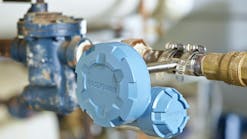The Hydraulic Institute published three new standards: Rotodynamic (Centrifugal) Pumps for Nomenclature and Definitions (ANSI/HI 1.1-1.2 – 2008); Rotodynamic (Centrifugal and Vertical) Pumps – Guideline for Condition Monitoring (ANSI/HI 9.6.5 – 2009); and Pump Piping for Rotodynamic Pumps (ANSI/HI 9.6.6 – 2009).
Rotodynamic (Centrifugal) Pumps for Nomenclature and Definitions (ANSI/HI 1.1-1.2-2008) covers: overhead impeller, separately coupled pumps; between bearing, separately coupled, single stage pumps; between bearing, separately coupled multistage pumps; regenerative turbine pumps; and special effects pumps. Also included are descriptions of types, nomenclature, and definitions.
Rotodynamic (Centrifugal and Vertical) Pumps – Guideline for Condition Monitoring (ANSI/HI 9.6.5-2009) is designed to be used as a tool in implementing process safety management, and also for general pump availability improvement programs for centrifugal and vertical pumps, including both sealed and sealless pump designs. While the document does not require that monitoring be done, this new reference tool does provide information relevant to making such decisions, and offers suggestions for carrying out the monitoring process.
Pump Piping for Rotodynamic Pumps (ANSI/HI 9.6.6-2009), initially published a number of years ago as a two-page section within (ANSI/HI 9.8 – 1998) Pump Intake Design, the subject matter was deemed broad enough, and popular enough, to warrant a stand alone publication. The expanded publication covers: the effects and interactions of inlet (suction) and outlet (discharge) piping on rotodynamic pump performance; solutions for avoiding problematic situations resulting from poorly designed suction piping, poorly supported piping, unrestrained or inadequately restrained expansion joints, and uncompensated thermal expansion of the piping system; and much more.

